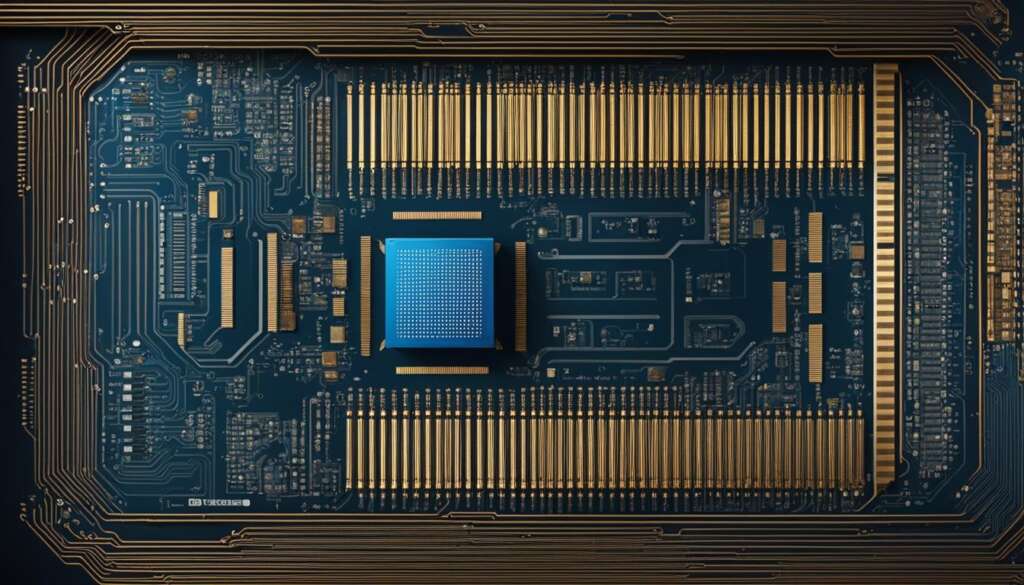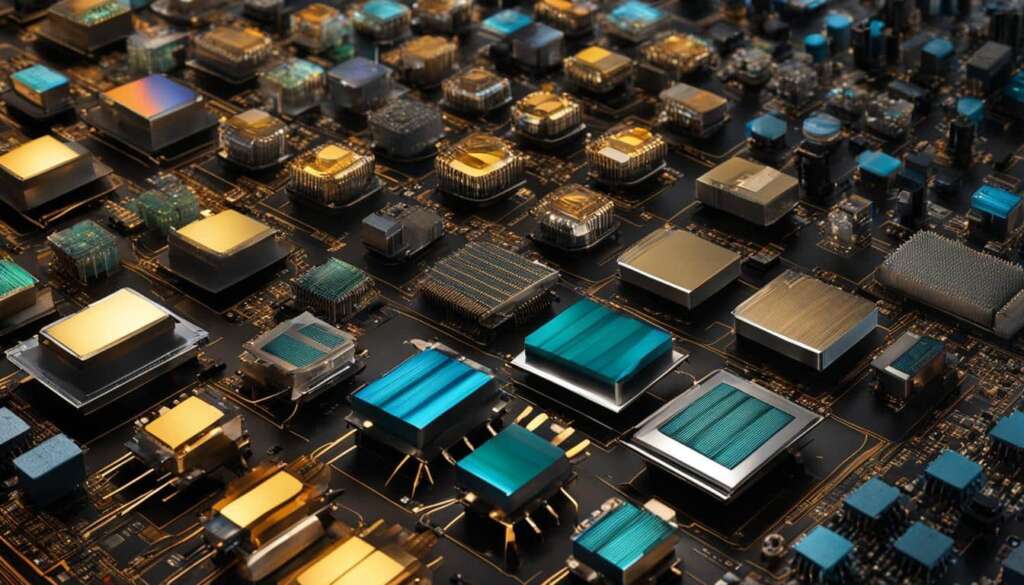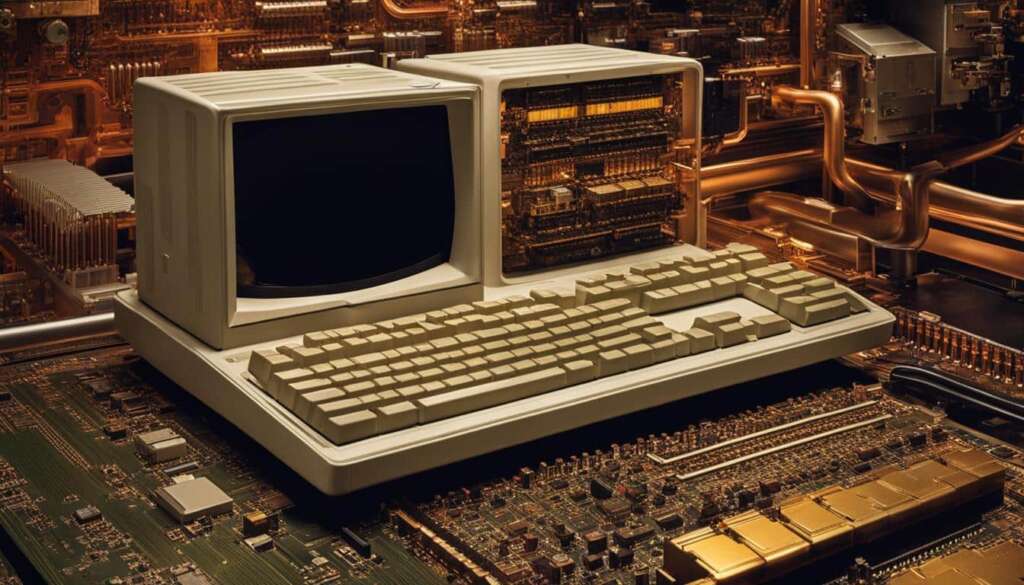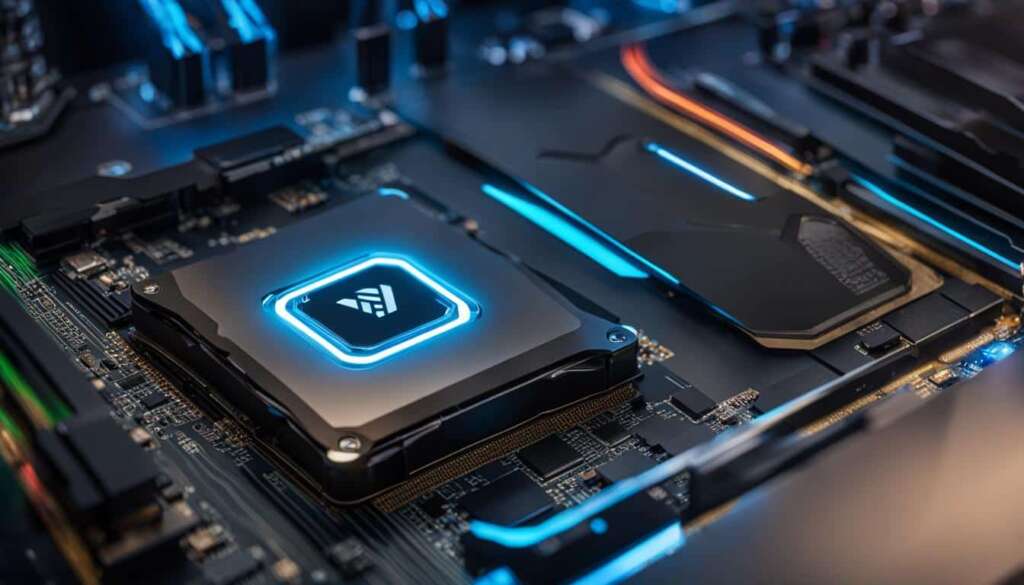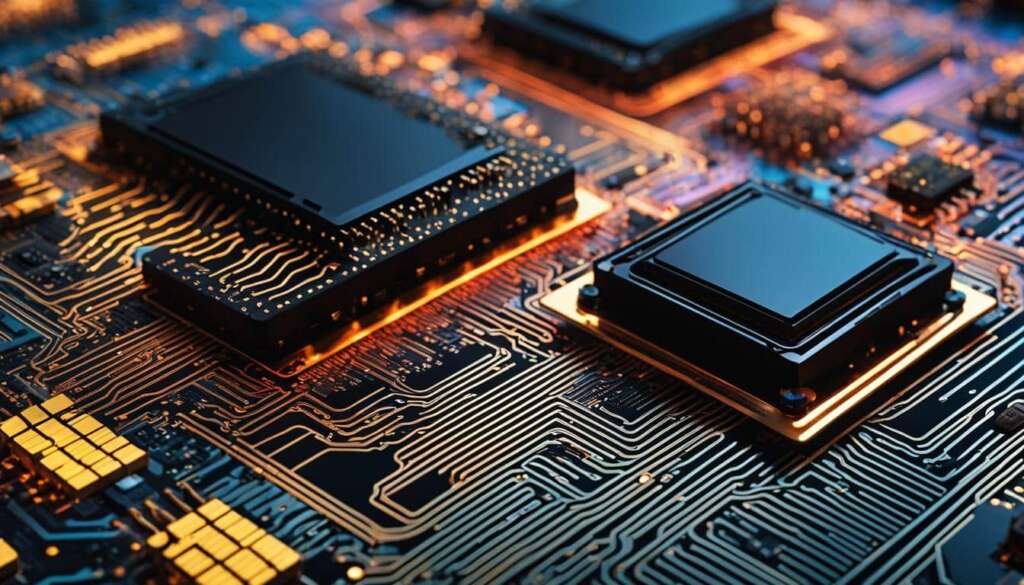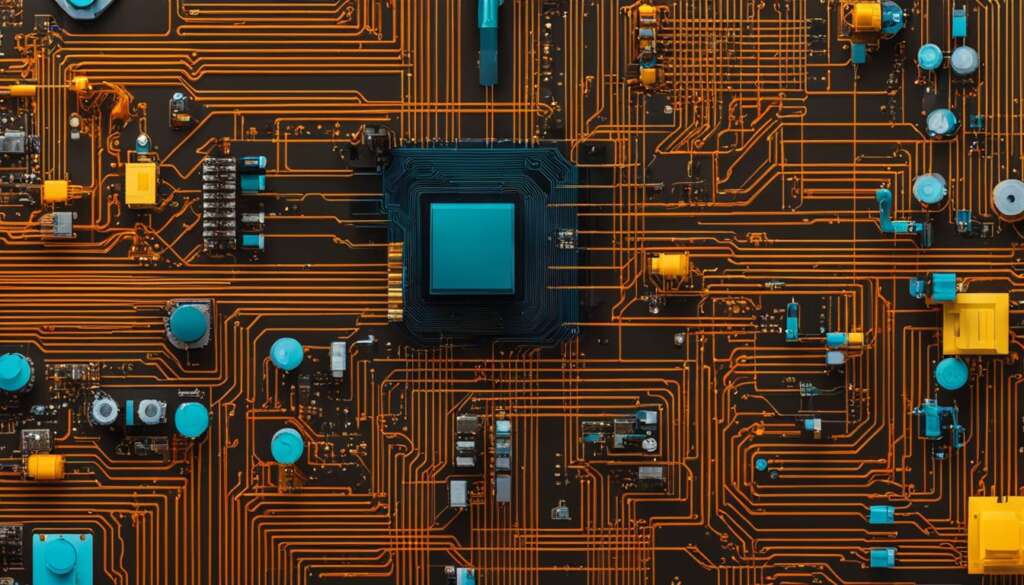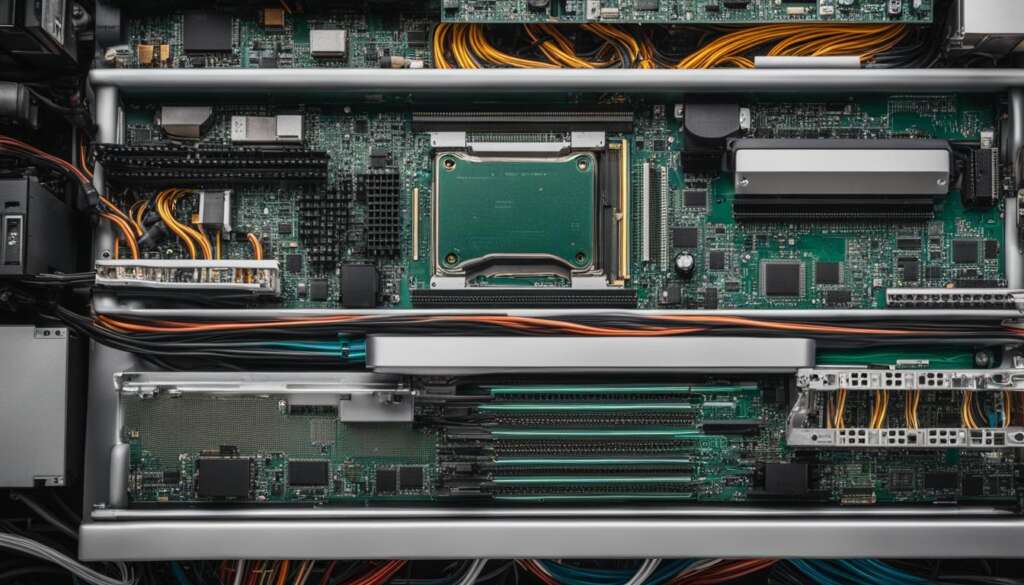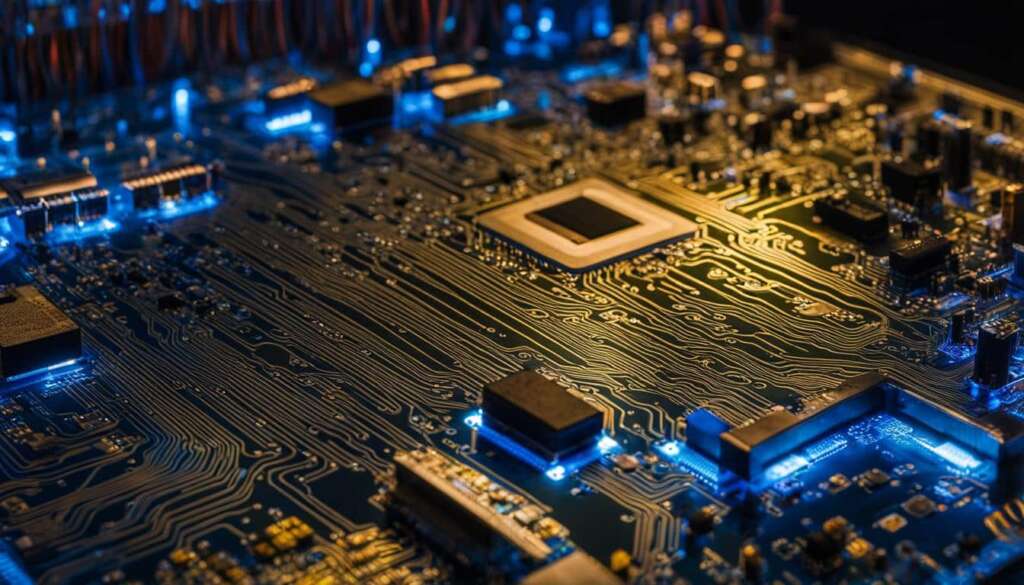Table of Contents
In today’s rapidly advancing digital world, measuring processor speed is essential in understanding the capabilities and performance of computer systems. From the early days of computing to the present, processor speed measurement has evolved significantly, driven by advancements in technology, Moore’s Law, and the need for faster and more efficient computing.
So, how exactly do we measure processor speed? And what benchmarks are used to evaluate and compare different processors? In this article, we will explore the fascinating journey of processor speed measurement, uncovering the impact of Moore’s Law, the limitations faced, and the future of this vital aspect of computing.
Before we delve into the details, let’s understand the importance of accurately measuring processor speed and why it is crucial in today’s technology-driven world.
The Impact of Moore’s Law on Processor Speed
Moore’s Law has had a significant impact on the development of computer processor speed. It has allowed engineers to predict the increase in processor speed and plan software and hardware development projects accordingly. Moore’s Law not only ensures that computers get bigger and faster over time but also helps in predicting how much bigger and faster they will become. This prediction is crucial for planning future advancements in technology. However, Moore’s Law is limited by the size of transistors and the heat generated by denser chips and faster signal processing.
The size of transistors must keep getting smaller for transistor counts to keep growing. However, chip density and processor speed have reached a limit due to the increased heat generated. Current technology is at the edge of generating enough heat to melt the chips, which is why metal heat sinks are used to conduct heat away from the chip. Heat sinks have spikes and zigzags to increase their surface area and enhance heat dissipation. Chip manufacturers have temporarily given up on making processors faster and instead started using multicore chips to increase effective speed. However, using multicore efficiently requires software to be written with multicore in mind.
The Limitations of Moore’s Law
The limitations of Moore’s Law are becoming more evident as technology advances. The size of transistors and the heat generated by denser chips and faster signal processing are major obstacles to further increases in processor speed. As chips become smaller and denser, the heat generated by the increased power consumption becomes a significant challenge. This heat must be dissipated efficiently to prevent damage to the chip. Additionally, the physical limitations of the materials used in chip manufacturing also impose constraints on future processor development.
To overcome these limitations, chip manufacturers are exploring alternative technologies, such as three-dimensional transistor designs and new materials that can better dissipate heat. These advancements have the potential to extend Moore’s Law and allow for further increases in processor speed. However, these solutions are still in the experimental stage and have not yet been widely implemented in commercial products. In the meantime, multicore processors continue to provide a viable solution for increasing overall computing performance, as they allow for parallel processing and improved multitasking capabilities.
| Advantages of Moore’s Law | Limitations of Moore’s Law |
|---|---|
|
|
The Limitations of Moore’s Law
The rapid advancements in processor speed and chip technology, driven by Moore’s Law, have propelled the evolution of computing devices. However, as chip density and processor speed continue to increase, limitations have emerged that challenge the further progression of Moore’s Law.
One of the primary limitations is the physical size of transistors, which must become smaller to accommodate the growing number of transistors on a chip. This shrinking size has led to chip density reaching a threshold where heat becomes a significant issue. The increased heat generated by denser chips and faster signal processing poses a risk of melting the chips. To counteract this, chip manufacturers have implemented metal heat sinks that conduct heat away from the chip, preventing damage. These heat sinks are designed with spikes and zigzags to maximize surface area and enhance heat dissipation.
“The size of transistors must keep getting smaller for transistor counts to keep growing.”
Additionally, processor speed has also hit a plateau due to these heat-related limitations. Rather than focusing solely on making processors faster, chip manufacturers have turned to multicore chips. By integrating multiple processors on a single chip, multicore chips increase effective speed and performance. However, effectively utilizing multicore processors requires software to be specifically designed to leverage multiple cores simultaneously, posing a challenge for software developers.
To summarize, the limitations of Moore’s Law lie in the physical constraints of chip density, processor speed, and heat dissipation. While these limitations present challenges, chip manufacturers are finding creative solutions to overcome them, ensuring the continued progress of processor technology.
The Journey of Microprocessors
The history of microprocessors dates back to the 1970s when the first microprocessors were designed and manufactured. Intel’s 4004, developed in 1971, is widely regarded as the first commercial microprocessor. Before the invention of microprocessors, computers relied on individual transistors and discrete circuits. The transistor, the building block of microprocessors, was invented in 1948 at Bell Labs. The introduction of microprocessors revolutionized the computing industry by allowing the integration of multiple transistors onto a single chip.
As the demand for more powerful and efficient computing devices grew, microprocessors evolved through different generations. Each generation brought advancements in terms of performance and capabilities. The second generation, from 1973 to 1978, witnessed the rise of 8-bit microprocessors such as the Intel 8085. The third generation, from 1979 to 1980, introduced 16-bit microprocessors like the Intel 8086. The fourth generation, from 1981 to 1995, saw the emergence of 32-bit microprocessors like the Intel 80386. The fifth generation, starting from 1995, brought 64-bit microprocessors such as the Intel Core 2.
To gain a better understanding of the evolution of microprocessors, let’s take a look at a table showcasing the different generations:
| Generation | Years | Microprocessor |
|---|---|---|
| First | 1971-1972 | Intel 4004 |
| Second | 1973-1978 | Intel 8085 |
| Third | 1979-1980 | Intel 8086 |
| Fourth | 1981-1995 | Intel 80386 |
| Fifth | 1995-present | Intel Core 2 |
These different generations of microprocessors have paved the way for modern computing as we know it today. With each new generation, microprocessors have become more compact, powerful, and efficient, enabling the development of innovative technologies and applications that shape our daily lives.
References:
- “The History of the Microprocessor”, Intel Corporation
- From Transistors to Microprocessors”, Computer History Museum
- “Microprocessor Generations”, Techopedia
Generations of Microprocessors
In the evolution of microprocessors, different generations have emerged, each bringing advancements and improvements in terms of speed and capabilities. Let’s explore the various generations of microprocessors, from 8-bit to 64-bit, and understand their significance in shaping the technology landscape.
8-bit Microprocessors
The second generation of microprocessors introduced 8-bit architecture. These microprocessors, such as the Intel 8085, revolutionized the computing industry by enabling more complex tasks and calculations. They were widely used in early personal computers and gaming consoles. The 8-bit architecture allowed for the manipulation of data in 8-bit chunks, providing a significant boost to computational capabilities compared to previous generations.
16-bit Microprocessors
In the third generation of microprocessors, 16-bit architecture became prevalent. The Intel 8086 was one of the pioneering microprocessors in this generation. With a wider data bus and increased memory addressing capabilities, 16-bit microprocessors offered improved performance for multitasking and more intricate data processing. These microprocessors were instrumental in the development of graphical user interfaces and the evolution of operating systems.
32-bit Microprocessors
The fourth generation of microprocessors witnessed the rise of 32-bit architecture. Microprocessors like the Intel 80386 brought significant advancements in terms of processing power and memory capacity. The increased word size allowed for faster and more efficient execution of complex instructions and calculations. 32-bit microprocessors became the standard for desktop and server systems, powering a wide range of applications and software.
64-bit Microprocessors
In the fifth generation of microprocessors, 64-bit architecture took center stage. These microprocessors, exemplified by the Intel Core 2, brought even greater computational capabilities by expanding the word size to 64 bits. The increased memory addressing space allowed for handling larger data sets and more extensive calculations, leading to improved performance in areas such as gaming, multimedia, and scientific simulations. 64-bit microprocessors are now the foundation of modern computing systems, powering advanced technologies like artificial intelligence and virtual reality.
| Generation | Year | Pioneering Microprocessor |
|---|---|---|
| 8-bit | 1973-1978 | Intel 8085 |
| 16-bit | 1979-1980 | Intel 8086 |
| 32-bit | 1981-1995 | Intel 80386 |
| 64-bit | 1995-present | Intel Core 2 |
Types of Microprocessors
A microprocessor is a crucial component of modern computer systems, responsible for executing instructions and performing calculations. Different types of microprocessors have been developed over the years, each with its own design and functionality. Let’s take a closer look at three prominent types: complex instruction set microprocessors (CISC), reduced instruction set microprocessors (RISC), and superscalar microprocessors.
CISC Microprocessors
CISC microprocessors are designed to minimize the number of instructions needed to perform complex tasks. They excel at executing multi-step operations with a single complex instruction. This type of microprocessor is well-suited for applications that require extensive mathematical calculations and data processing. CISC microprocessors are known for their versatility and ability to handle a wide range of tasks efficiently.
RISC Microprocessors
RISC microprocessors, on the other hand, simplify the instruction set to reduce execution time and improve performance. They focus on executing a set of basic instructions quickly, making them ideal for applications that require fast processing of specific tasks. RISC microprocessors are commonly found in embedded systems, mobile devices, and other applications that prioritize speed and efficiency.
Superscalar Microprocessors
Superscalar microprocessors are designed to take advantage of parallelism by executing multiple instructions simultaneously. They feature multiple operation units, allowing them to perform several tasks at the same time. This type of microprocessor offers high throughput and is particularly well-suited for applications that require intense multitasking and parallel processing, such as scientific simulations and 3D rendering.
In summary, microprocessors come in various types, each offering unique capabilities and advantages. CISC microprocessors prioritize complex instruction execution, RISC microprocessors focus on fast execution of basic instructions, and superscalar microprocessors excel at parallel processing. The choice of microprocessor type depends on the specific requirements of the application or system being developed.
Features of Modern Microprocessors
Modern microprocessors come with a range of features that contribute to their performance and efficiency. These features enhance the overall functionality of microprocessors, making them capable of handling complex tasks and delivering high-speed processing.
Clock speed is an important feature of modern microprocessors. It refers to the speed at which the processor can execute instructions. Over the years, clock speeds have increased significantly, leading to faster processing times. This means that microprocessors can handle more instructions per second, resulting in improved overall performance.
Cache memory is another crucial feature of modern microprocessors. It is a small, high-speed memory that stores frequently accessed data. This allows the processor to quickly retrieve and process the data without accessing the main memory, resulting in faster execution of instructions.
Quote: “Modern microprocessors are equipped with multi-core processors, allowing for simultaneous multitasking and improved overall performance.”
Multi-core processors are becoming increasingly common in modern microprocessors. These processors incorporate multiple cores, or processing units, on a single chip. This enables the microprocessor to handle multiple tasks simultaneously, enhancing multitasking capabilities and improving overall performance.
In addition, modern microprocessors often include integrated graphics processing units (GPUs). These GPUs are dedicated processors designed to handle graphics-intensive tasks, such as gaming or video editing. By offloading these tasks to a separate GPU, the microprocessor can focus on other computational tasks, resulting in improved overall performance and efficiency.
Power management features are also important in modern microprocessors. These features allow the microprocessor to efficiently manage and optimize power consumption, reducing energy usage and heat generation. By intelligently adjusting power levels based on workload, microprocessors can strike a balance between performance and energy efficiency.
| Feature | Description |
|---|---|
| Clock Speed | The speed at which the processor can execute instructions. |
| Cache Memory | High-speed memory that stores frequently accessed data, improving processing speed. |
| Multi-core Processors | Processors with multiple cores, enabling simultaneous multitasking and improved performance. |
| Graphics Processing Units (GPUs) | Dedicated processors for handling graphics-intensive tasks, offloading the main processor and improving performance. |
| Power Management | Features that optimize power consumption and reduce energy usage, improving energy efficiency. |
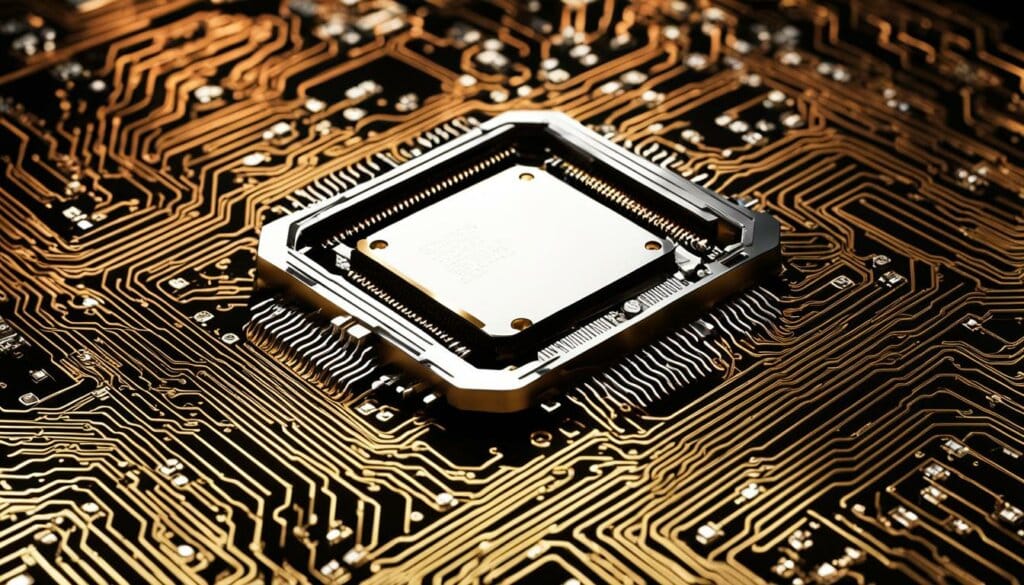
Overall, the features of modern microprocessors contribute to their ability to handle demanding tasks, process information quickly, and deliver efficient performance. Advances in clock speed, cache memory, multi-core processors, graphics processing, and power management have resulted in powerful microprocessors that can meet the demands of various applications and computing needs.
Advantages of Microprocessors
Microprocessors offer a range of advantages that make them a fundamental component of modern computing systems. These advantages include:
- High Processing Speed: Microprocessors are known for their exceptional processing speed. They are designed to execute instructions swiftly, allowing for faster execution of tasks and improved overall performance.
- Compact Size: Microprocessors are compact in size, making them suitable for integration into various devices. Their small form factor enables the development of portable and space-efficient computing solutions.
- Easy Maintenance: Microprocessors are relatively easy to maintain. They can be easily replaced or upgraded without requiring significant changes to the overall system architecture.
- Flexibility: Microprocessors offer flexibility in terms of software compatibility and versatility. They can run a wide range of applications and support different operating systems, providing flexibility in system design and usage.
- Ability to Perform Complex Mathematics: Microprocessors excel at performing complex mathematical calculations. They can efficiently handle calculations involving large numbers, advanced algorithms, and intricate mathematical operations.
“Microprocessors are the powerhouses of modern computing, combining high processing speed, compact size, easy maintenance, flexibility, and the ability to handle complex mathematics.”
Overall, microprocessors have revolutionized the world of computing, enabling the development of advanced systems that deliver exceptional performance while being compact and versatile. Their advantages in processing speed, size, maintainability, flexibility, and mathematical capabilities make them indispensable in a wide range of applications, from personal computers to smartphones, from industrial automation to artificial intelligence.
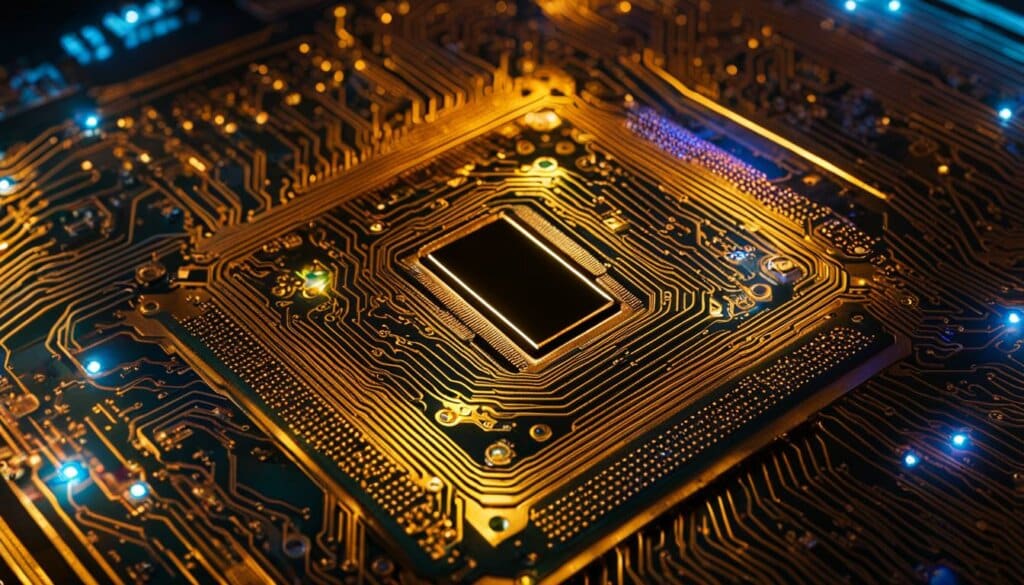
The Disadvantages of Microprocessors
While microprocessors offer numerous advantages, they also come with certain drawbacks that users should be aware of. Here are the main disadvantages associated with microprocessors:
1. Overheating
One of the primary challenges with microprocessors is the issue of overheating. Microprocessors can generate a significant amount of heat, especially when they are overused or not properly cooled. This can lead to reduced performance and, in extreme cases, even damage to the microprocessor itself. To mitigate this problem, it is essential to employ effective cooling mechanisms, such as heat sinks or liquid cooling systems, to dissipate the excess heat and maintain optimal operating temperatures.
2. Performance Dependence on Data Size
Another limitation of microprocessors is their performance dependence on the size of the data being processed. Microprocessors are designed to handle specific data sizes efficiently, and their performance can be affected when processing larger or more complex data sets. In such cases, the execution time may increase, leading to slower overall performance. It is important to consider the data requirements of your applications and choose a microprocessor that can handle the workload effectively.
3. Larger Board Size
Microprocessors typically require larger board sizes compared to microcontrollers. Due to the complex circuitry and additional components required for their operation, microprocessors take up more physical space on a circuit board. This can be a challenge in applications where board size is limited, such as in compact electronic devices or embedded systems. Designers and engineers need to consider the physical dimensions of the microprocessor when planning the layout of their circuit boards.
4. Lack of Support for Floating-Point Operations
Some microprocessors do not have built-in support for floating-point operations, which can limit their capabilities in certain applications that rely heavily on complex mathematical calculations. Floating-point operations are essential for tasks such as scientific computing, simulations, and graphics rendering. If your application requires extensive floating-point computations, it is crucial to choose a microprocessor with dedicated floating-point hardware or consider alternative solutions such as coprocessors or specialized hardware accelerators.
Despite these disadvantages, microprocessors remain powerful and versatile devices that drive the advancements in modern computing technology. By understanding their limitations and carefully selecting the appropriate microprocessor for your specific needs, you can maximize their benefits and overcome potential challenges.

The Future of Processor Speed Measurement
The future of processor speed holds exciting possibilities with the integration of advanced technologies and features. Modern microprocessors are incorporating machine learning capabilities, enabling faster and more efficient processing of artificial intelligence tasks. With machine learning, microprocessors can analyze vast amounts of data and make intelligent decisions, enhancing the overall performance and responsiveness of computers.
“Machine learning capabilities in microprocessors are revolutionizing various industries, from healthcare to self-driving cars,” says Dr. Sarah Johnson, a leading expert in computer engineering. “These processors can quickly process complex patterns and make real-time predictions, opening up new opportunities for innovation and problem-solving.”
Furthermore, internet connectivity is becoming increasingly important, and microprocessors are now equipped with Wi-Fi and Ethernet capabilities. This connectivity allows for seamless integration with the internet of things (IoT) devices, enabling efficient communication between devices and the cloud. It also enables the use of cloud-based computing resources, expanding the capabilities and processing power of microprocessors.
Security features are also being integrated into modern microprocessors to protect against threats such as malware and hacking. Advanced encryption algorithms and secure boot mechanisms ensure the integrity and confidentiality of data, providing users with a safe computing environment. Additionally, microprocessors are equipped with hardware-level security features, such as secure enclaves, that protect sensitive data and prevent unauthorized access.
Table: Comparison of Future Processor Features
| Feature | Description |
|---|---|
| Machine Learning Capabilities | Microprocessors leverage machine learning algorithms to analyze data, make predictions, and improve performance in AI tasks. |
| Internet Connectivity | Microprocessors come equipped with Wi-Fi and Ethernet capabilities, enabling seamless integration with the internet of things (IoT) devices and cloud computing resources. |
| Security Features | Advanced encryption algorithms, secure boot mechanisms, and hardware-level security features protect against malware, hacking, and unauthorized access. |
As microprocessors continue to advance in these areas, the future of processor speed measurement will not only focus on raw computational power but also on the integration of intelligent technologies, connectivity, and security features. This evolution will pave the way for more efficient and secure computing systems that can meet the demands of emerging technologies, such as artificial intelligence, IoT, and cloud computing.
Conclusion
In conclusion, the measurement of processor speed has evolved significantly over the years. Moore’s Law and advancements in microprocessor technology have led to exponential growth in speed and performance. The journey of microprocessors has seen the development of different generations and types, resulting in versatile and powerful devices.
The future holds even greater potential as microprocessors continue to advance in areas such as machine learning, connectivity, and security. Processor speed measurement remains crucial in determining the capabilities of computers, and it will continue to shape the technology landscape.
With the incorporation of machine learning capabilities, modern microprocessors are poised to process artificial intelligence tasks faster and more efficiently. Internet connectivity features, including Wi-Fi and Ethernet, are becoming increasingly important. Additionally, microprocessors are integrating security features to protect against malware and hacking threats.
As we look ahead, the measurement of processor speed will continue to play a vital role in the development of cutting-edge technologies. The evolution of microprocessors has paved the way for a future with powerful computing devices that can handle complex tasks with ease. The potential for further advancements in machine learning, connectivity, and security will further shape the landscape of processor speed measurement.
FAQ
How do you measure processor speed?
Processor speed is typically measured in gigahertz (GHz), which represents the number of clock cycles a processor can execute in one second. A higher GHz value generally indicates faster processing speed.
What is a processor speed benchmark?
A processor speed benchmark is a standardized test that measures the performance of a processor. These benchmarks compare the speed and capabilities of different processors, providing a reference for evaluating their performance.
How does Moore’s Law impact processor speed?
Moore’s Law predicts that the number of transistors on a chip doubles every year, leading to the exponential growth of processor speed. This prediction has allowed engineers to plan for increasing processor speed and has guided software and hardware development projects.
What are the limitations to Moore’s Law?
Moore’s Law is limited by factors such as chip density and the heat generated by denser chips and faster signal processing. Chip manufacturers have overcome this by using multicore chips and implementing heat sink technologies to dissipate the heat.
What is the history of microprocessors?
Microprocessors were first introduced in the 1970s. The Intel 4004, developed in 1971, is widely considered the first commercial microprocessor. Before microprocessors, computers relied on individual transistors and discrete circuits.
What are the different generations of microprocessors?
Microprocessors have evolved through different generations. The first generation introduced microprocessors like the Intel 4004. Subsequent generations brought advancements such as 8-bit, 16-bit, 32-bit, and 64-bit microprocessors.
What are the types of microprocessors?
There are different types of microprocessors based on their design and functionality. Complex instruction set microprocessors (CISC) aim to minimize the number of instructions per program. Reduced instruction set microprocessors (RISC) simplify the instruction set. Superscalar microprocessors can perform multiple tasks simultaneously.
What are the features of modern microprocessors?
Modern microprocessors come with features such as increased clock speed, cache memory for faster data access, multi-core processors for simultaneous multitasking, graphics processing units (GPUs) for handling graphics-intensive tasks, and power management features for reduced power consumption.
What are the advantages of microprocessors?
Microprocessors offer high processing speeds, compact size for various devices, easy maintenance and upgradability, and the ability to perform complex mathematical calculations in a single command, making them versatile and flexible.
What are the disadvantages of microprocessors?
Microprocessors can overheat if not properly cooled, their performance can depend on data size, they require larger board sizes compared to microcontrollers, and some microprocessors do not support floating-point operations, limiting their capabilities in certain applications.
What is the future of processor speed measurement?
The future of processor speed measurement holds exciting possibilities, with microprocessors incorporating machine learning capabilities for faster AI tasks, internet connectivity features, and integrated security features to protect against malware and hacking.

